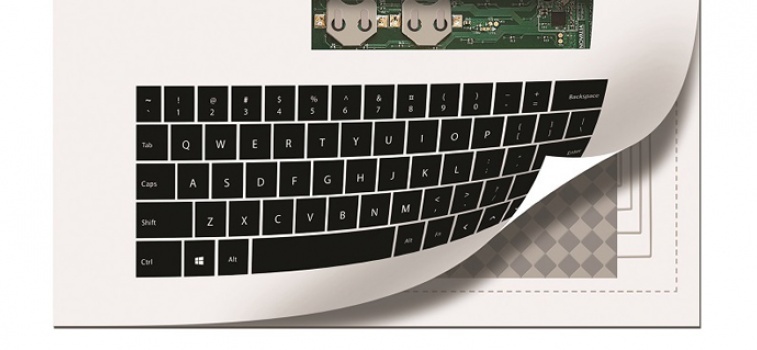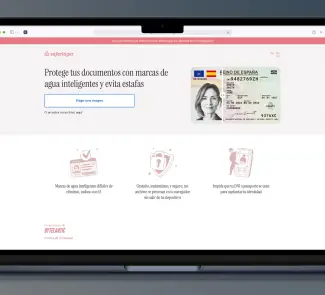The ingredients are photographic paper, a printed circuit that conducts electricity and a thin electronic module.
Novalia is a company that specialises in printing. Its website sells posters and other types of related services. But it’s different in some aspects, such as its foam-board bluetooth controller that connects to a mobile application to control certain smartphone functions with buttons. Its newest experiment is along these rebellious lines. In this case, they’ve come up with a bluetooth keyboard made of paper, that uses a simple SoC (system on a chip) to communicate with the corresponding device.
The paper bluetooth keyboard is an experimental project, but it demonstrates the amazing things that can be done with a conventional printer. The invention has three simple components. The first is photographic paper, the second is ink – with the capacity to conduct electricity – that is printed on the surface of the photographic paper and, finally, the electronic module.
The printed circuit is designed to distinguish between the keys and to allow each one to send its information directly to the electronic module. The module is manufactured by Nordic Semiconductor and it processes all of the data sent to it by the pressed keys and instantly sends it to the corresponding device via bluetooth. The keyboard is extremely efficient: according to the manufacturer, one CR2032 button cell can last up to nine months.
Using this method, low-cost capacitive sensors could be mass-produced using a conventional printer. According to Nordic, different circuits could be used to build the base for different devices, and they add that low-cost keyboards made of paper could be used to facilitate access to modern technology in areas with limited resources.
Printing of circuits
Despite its originality, Novalia‘s isn’t the first initiative aimed at designing printed circuits with ink. A joint research project between Microsoft Research and the University of Tokyo came up with a formula for printing on paper with silver ink. In this case, they also used photographic paper, and the result could be obtained with a conventional inkjet printer.
The EX1 3D printer has also been used to explore this field. In this case, the circuits are printed using the combined action of two ink cartridges, that deposit silvered nanoparticles. Paper or other types of surfaces can be used as a support.









